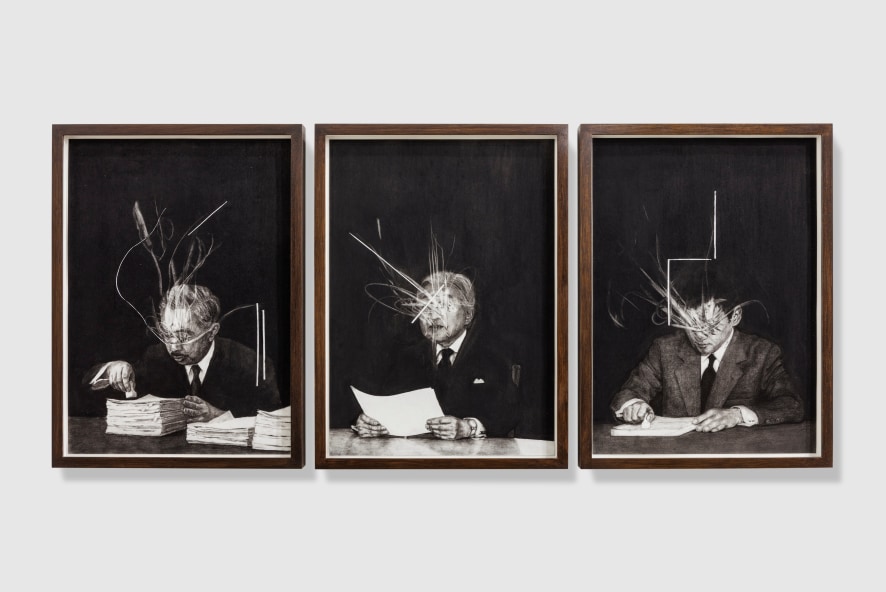Symbol #3, 2018
charcoal on paper and wooden frame
paper: 42 x 29.7 cm each
Meiro Koizumi (1976, Gunma, JP) often investigates his surroundings : Japan’s ritualistic culture and past events. As part of this process the painful reality hidden behind serene facades is revealed, opening up a new reality and possibilities for new ways of resolving the past in a way that can be understood on a global scale.
This triptych shows the previous emperor (Hirohito), the current emperor (Akihito), and the new emperor (Naruhito). They are all making symbolic gestures, which have a huge significance and impacts over people's life.
The previous emperor and the new emperor are putting the emperor's seal on documents to approve new laws which are made in the parliament. This is one of the most important tasks of the emperor's daily life, which is to give authority to the state's laws. The emperor does not have any political power, so it doesn't matter whether he personally likes the new law or not. As a symbol of the state, he just has to approve whatever, and repeat this gesture of putting seals on piles of documents over and over mechanically.
The emperor does not have human rights, which means they have to repress their inner feelings from the public. This also shows how big their political power potentially could be.
In the public space, the Emperor's face, is only allowed to "smile" or to be "serious". He is not allowed to express any other feelings with his face, like sadness, anger and so on. The only way for him to express his inner feeling is through ritualistic speech, or through writing poems in Haiku style.
"With an eraser, I deformed his face to disturb the sign that is fixated on his face within the solid social structure."
I think through using the images of the emperor, this series is dealing with this tension between appearance and inner-self, formal and expressive, sacred and banal, calculated and spontaneous, and symbolic and non-symbolic."

